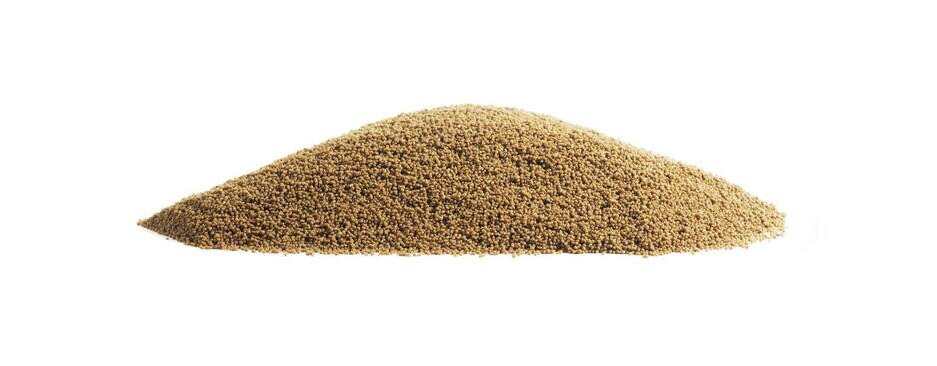Fish oil is fat from fish parts or industrial fish (i.e. fish that is not intended for human consumption). Fish oil has a high content of the omega-3 fatty acids EPA and DHA. From one kilogram of industrial fish, around 80 grams of fish oil can be produced.
Vegetable ingredients in fish feed are derived from plants like soy, sunflowers, rapeseed, corn, broad beans and wheat. The vegetable products are a source of protein, carbohydrates and fat.
Fishmeal is produced by fish heads and other parts that are not used for human consumption. Fishmeal contains proteins and minerals. From one kilogram of industrial fish, around 230 grams of dry fishmeal can be produced.
Fish protein concentrate is produced by scrapings from the consumer fishing industry.
Fish feed also contains vitamins, minerals, pigments and amino acids. The antioxidant astaxanthin is added to salmon feed to boost the fish's immune system and to protect their tissue. It is also a source of vitamin A. Astaxanthin is the substance that gives salmon its red colour. Wild salmon get astaxanthin by eating crustaceans.
Does salmon feed contain toxins?
Norwegian fish does not contain high levels of heavy metals or contaminants. The Norwegian Institute of Marine Research is commissioned by the Norwegian Food Safety Authority to annually check for high levels of illegal substances in Norwegian fish feed. In the annual monitoring of Norwegian fish feed, researchers found no undesirable substances above the limit values (2018).
Since fish feed consists mainly of plant raw materials, the Norwegian Institute of Marine Research has expanded the list of pesticides included in the monitoring.
Useful links
Program for monitoring fish feed 2018
Evaluation of risks concerning Norwegian fish farming (2018), by the Norwegian Institute of Marine Research (in Norwegian only)
